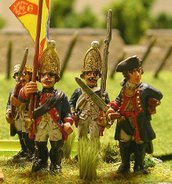Step 1 - solve the weight issue: I did this by filling each crater about half way with #6 lead shot. I had this hanging around my shop as it's a material I use to make ballast blocks for R/C model airplanes. Sand probably would have worked just as well. After I got the lead shot spread out evenly I drizzled PVA (Elmers) glue over the lead shot. I thought I might have to stir it in, but capillary action spread it out perfectly. These photos were taken after the PVA dried for 48 hours. There seems to be enough texture in the crater models to let the PVA bond well enough to the plastic. The craters are now too heavy. Sand would have worked better and kept the weight just right.
Step 2 - keep the craters from sliding around: After the PVA was good and try, I sprayed the underside of the craters with textured spray paint. I chose a texture that was very fine - just enough to give the crater bases some grip on the tabletop. I also sprayed all of the lead shot with a coat of paint. I did this mostly to add a second layer of binder over the PVA and to moisture-proof the lead and PVA mix. The photos below were taken while the paint was still wet. When dry it's a flat finish like the top of the paint can.

After seeing how nice the texture looked on the crater undersides, I thought it would improve the top of the craters, reducing the smoothness of the plastic. Craters are made of blasted-up dirt. They shouldn't be smooth at all.
It was my hope that this texture would also hide the flat flange at the edge of the crater models, but alas, they still look quite artificial. I guess that's going to be step 3 in the next update. Stay tuned.....











2 comments:
Good work so far AJ.
Very nice looking terrain, Allan.
Post a Comment